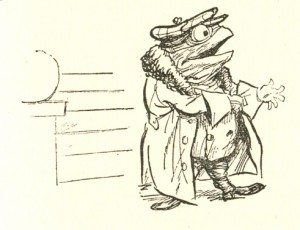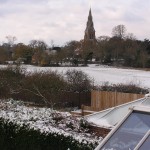The remarkable story of John Garrett Bussell (1802 – 1875), one of the pioneering settlers of south-western Australia, is included in my new book, Basingstoke and its Contribution to World Culture. Margaret Whicher of Petersfield, the young cousin whom Bussell hoped to marry, was to live in Basingstoke for fifty years, in the fine house on Church Street that was later known as Queen Anne House. Jan Matthews and John Alferink of the Margaret River District Historical Society have established that, under other circumstances, the river that Bussell named after her might well have been called ‘Sophia River’. Jan here describes the quest for Sophy Hayward, Bussell’s other lost love.
Margaret River, in the south-west corner of Western Australia, is a beautiful place, named after the river on which it sits. And the river in turn was named by early settler and explorer John Garrett Bussell after Margaret Whicher of Petersfield.
The Historical Society in Margaret River was interested in researching the facts behind this naming, and have indeed found them to our satisfaction, but the story we wished to present had an untidy thread dangling and we thought it should be neatly tied off.
And there began a fascinating and – so far – totally frustrating search which we have come to think of as “Whatever Happened to Sophy Hayward?”
Sophia (Sophy) Hayward was the childhood sweetheart and heiress whom John Garrett Bussell left behind when he sailed for Western Australia in 1829, and it was a long eight years later that he made a return trip to England with the intention of marrying his Sophy and bringing her back to Australia. It can be seen from extant letters that the reunion was less than a success and neither Sophy nor John’s friends at the time saw the match as propitious. John wrote one letter to Sophy in which he states that he no longer loves her as he once did, but is still prepared to marry her, which does rather sound like a defence against a breach-of-promise suit and hardly likely to set a maiden’s heart a-flutter. The relationship foundered.
John Garrett Bussell went on to marry Charlotte Cookworthy and sail back to Western Australia and it has to be said that Charlotte was an excellent and highly suitable wife. But Sophy?
One of the most poignant letters that we unearthed in our search was one written by Sophy to a cousin and friend, asking her if she would offer a batch of visiting cards to her friend Mrs W. Bussell. These cards Sophy had had printed, she wrote, at a time when she had expectations of becoming a Mrs Bussell and, as “Mrs Bussell” was all they had inscribed on them, they could in fact be put to use by Mrs. W. Bussell. This was in 1841 and is the last we can find of Sophy.
Investigations have turned up the surprising information that Sophy was the illegitimate daughter of one James Morgan, himself the son of an impressively wealthy James Morgan senior, of Bath, details of whose Will we have accessed. Sophia was born in 1806 and her brother James in 1810 and their father died in 1809. It would seem that both children were born, and their father died, in India. James-the-most-Junior states his birthplace as Bengal on a later census, and information from a family tree on the web indicates that his father spent extended time in India on more than one occasion. Whether this was government, trade or military we have been unable to elicit, but we fancy not military.
When Sophia and James’ grandfather died in 1810 they were mentioned in his will (actually the will mentioned three children, but we have only found trace of two) and baldly described as the illegitimate children of his late son James. They are commended to the care of their Aunt Elizabeth Morgan who indeed cares for them until her death in 1825. Elizabeth bought Loudwater House in Rickmansworth (still existing as luxury flats; one does wonder at the thought of Sophy swapping this for a slab hut in the Australian wilderness!) and James inherited it when Elizabeth died. It is here in the 1841 census that we find Sophy living with her brother and his family. We have traced brother James to his death in London in 1875, but of Sophy there is not a single footprint.
Sweet reason would have her marrying, of course, but using the resources available to us on the web we have assiduously pursued all the likely records to prove each of them inapplicable, one after another. Ditto the deaths.
From our position, using only web resources we can, for instance, see the offspring of Sophy’s brother James and in some cases their offspring, but sleuthing opportunities dry up as records become more current. The privacy aspect is completely understandable, but oh! so frustrating! We’ve even done some “shoot an arrow in the air” letters to people in the phonebook who we think might have the right name to be related to our Sophie and James, without luck.
We did find that one of James and Sophy’s uncles emigrated to the US with his family and we have as a result of enquiries an emailed copy of a lovely portrait of his son, who would have been James and Sophy’s cousin, of course. Close, but no cigar. Actually it’s hardly close even, but it’s amazing how excited you can get at the remotest of relationships! We did fantasise that Sophy may have moved to America with her uncle, but can’t find anything that would confirm this.
One of the most intriguing aspects of the story we’re researching here is that Sophy and James are openly admitted to be illegitimate and one would have thought that a family of such obvious substance as the Morgans would move in social strata that concealed rather than revealed these things? We may be well out of touch here with the mores of the time and situation, but it does seem to us that there might well be extenuating circumstances to their illegitimacy. We’ve been unable to trace anything like a birth registration for either of them in India and are completely, completely in the dark as to the identity and situation of their mother.
Yes, this was just a loose end to be followed up and tied off. It’s been over a year of sleuthing so far but we’re not giving up…

